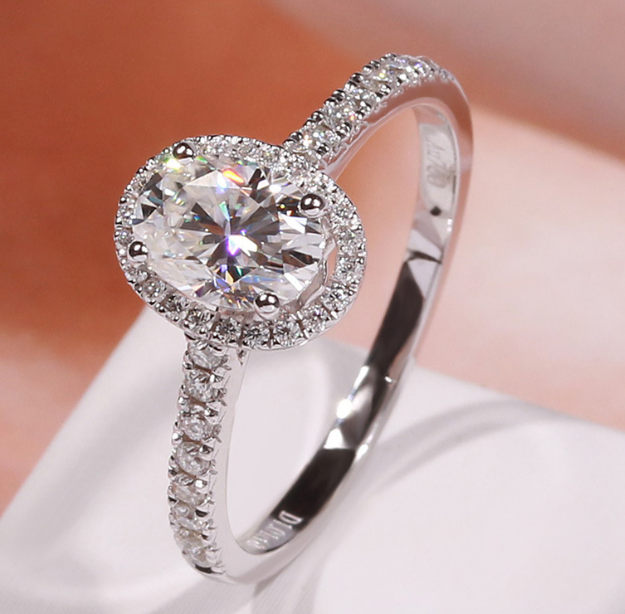In today’s rapidly evolving world, lab diamonds and cultures have emerged as a transformative force within both the jewelry industry and various cultures. As we explore this fascinating topic, we will uncover how these man-made gems challenge traditional norms while embracing the diverse cultural contexts in which they exist.
The Rise of Lab-Grown Diamonds
Lab-grown diamonds, often referred to as synthetic or cultured diamonds, are created using advanced technology that replicates the natural processes occurring deep within the Earth. These diamonds possess the same physical, chemical, and optical properties as their mined counterparts, making them a desirable alternative for consumers seeking ethical and sustainable options.
Ethical Considerations
One of the primary reasons for the surge in popularity of lab-grown diamonds is their ethical appeal. Unlike mined diamonds, which often contribute to human rights abuses and environmental degradation, lab-grown diamonds offer a guilt-free purchasing experience. This shift in consumer behavior reflects a broader cultural trend toward sustainability and social responsibility.
Cultural Significance of Diamonds
Diamonds have long been revered across cultures for their beauty and symbolism. Traditionally, they represent love, commitment, and wealth. However, the advent of lab-grown diamonds is redefining their cultural significance.
Rituals and Traditions
In many cultures, diamonds play a crucial role in rituals and celebrations. For example, in Western societies, diamonds are synonymous with engagement rings, symbolizing eternal love. The integration of lab-grown diamonds into these rituals showcases a blending of modern values with traditional practices. Couples increasingly choose lab-grown options to celebrate their love without compromising their ethical beliefs.
Cultural Variations
In India, diamonds hold a distinct place within the wedding industry, often associated with prosperity and status. The introduction of lab-grown diamonds is gaining traction among younger generations who are increasingly concerned about sustainability. As these diamonds become more accepted, we witness a shift in cultural perceptions surrounding marriage and wealth.
Innovation and Technology
The production of lab-grown diamonds involves two main processes: High Pressure High Temperature (HPHT) and Chemical Vapor Deposition (CVD). Both methods produce diamonds that are virtually indistinguishable from natural stones.
High Pressure High Temperature (HPHT)
This technique mimics the natural conditions under which diamonds form. By applying extreme pressure and temperature, carbon atoms bond to create diamonds. The result is a gem that exhibits the same characteristics as those mined from the Earth, appealing to traditionalists who value authenticity.
Chemical Vapor Deposition (CVD)
CVD involves introducing gases that contain carbon into a chamber. The gases break down, allowing carbon to settle and form diamond crystals. This method offers greater control over the diamond’s characteristics, including color and clarity, enabling customization to meet consumer demands.
Impact on the Jewelry Industry
The jewelry industry is undergoing a significant transformation due to the rise of lab-grown diamonds. Retailers are adapting their strategies to cater to a growing audience that prioritizes ethical considerations.
Changing Consumer Preferences
As more consumers educate themselves about the ethical implications of their purchases, the demand for lab-grown diamonds continues to rise. Jewelers are responding by expanding their offerings and highlighting the benefits of choosing lab-grown options. This shift not only reflects changing values but also opens up new avenues for creativity and innovation within the industry.
Market Dynamics
The emergence of lab-grown diamonds is reshaping market dynamics. As production costs decrease, these diamonds are often priced lower than mined diamonds, making them accessible to a broader audience. This democratization of luxury signifies a cultural shift toward inclusivity in the world of fine jewelry.
Global Perspectives on Lab Diamonds
Across different cultures, the perception of lab-grown diamonds varies, highlighting the intricate relationship between technology and tradition.
Western Cultures
In Western societies, lab-grown diamonds are gaining acceptance, particularly among younger consumers who prioritize sustainability. The rise of social media influencers and ethical brands is amplifying this trend, encouraging individuals to embrace lab-grown diamonds as a viable alternative to mined stones.
Asian Markets
In Asia, cultural perceptions of diamonds remain deeply rooted in tradition. However, as awareness of ethical sourcing increases, we are witnessing a gradual acceptance of lab-grown diamonds, particularly among the younger generation. This shift reflects a broader cultural transformation as values evolve and adapt to modern realities.
The Future of Lab-Grown Diamonds
As we look ahead, the future of lab-grown diamonds appears promising. Continued advancements in technology and growing consumer awareness will likely propel the industry forward.
Sustainability Efforts
The commitment to sustainability will remain a driving force in the lab-grown diamond sector. Companies are increasingly investing in eco-friendly practices, further enhancing their appeal to environmentally conscious consumers. This dedication to sustainability is not merely a trend; it represents a cultural evolution that prioritizes ethical considerations in consumer choices.
Cultural Integration
As lab-grown diamonds continue to gain acceptance, their integration into cultural traditions will deepen. We can expect to see more innovative designs and unique applications in jewelry that reflect diverse cultural values. The merging of tradition and modernity will create exciting new narratives surrounding these gems.
Conclusion
Lab diamonds are more than just an alternative to mined stones; they represent a profound shift in cultural values and consumer behavior. As we embrace the beauty and ethical implications of lab grown diamonds, we contribute to a more sustainable future that honors tradition while welcoming innovation. The evolving relationship between culture and technology will undoubtedly shape the future of the diamond industry, making it an exciting space to watch.







